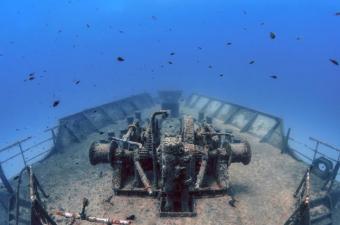
OVERVIEW
Can a separate innocent co-assured establish an insured peril of “piracy” “malicious mischief” “persons acting maliciously” “vandalism” or “sabotage” in the face of a finding of wilful misconduct by its co-assured?
This was just one of the questions considered by Teare J in the context of a war risks policy in the latest first instance decision in Suez Fortune Investments Ltd & Piraeus Bank AE v Talbot Underwriting Ltd & others (“The Brillante Virtuoso”) [2019] EWHC 2599 (Comm) arising out of the loss of the tanker Brillante Virtuoso off the coast of Aden in July 2011.
The Claims
On 5/6 July 2011 the Brillante Virtuoso was boarded by a group of armed men as she was drifting off the coast of Aden late at night. The vessel was ordered towards Somalia but sailed only a short distance after which her main engines were stopped and an improvised explosive incendiary device was detonated causing a fire in her engine room. The fire spread and caused severe damage to the vessel.
The Owners claimed this was a result of a fortuitous hostile third-party attack on the vessel and together with the mortgagee bank as separate co-assured brought a claim under their war risks policy. The war risk insurers denied liability. They did so, primarily on the basis that the vessel had been scuttled although various other defences were also raised. They counterclaimed for declarations of non-liability under the policy.
The vessel was found to be a constructive total loss by Flaux J in 2014 (see [2015] EWHC 42 (Comm)). In 2016 the Owners’ claim was struck out for failing to disclose documents and a subsequent application for relief for sanctions was refused by Flaux J (see [2016] EWHC 1085 (Comm)) leaving the bank’s claim and the war risk insurers’ counterclaim to proceed to trial.
The Court’s Decision
After a lengthy enquiry into the circumstances of the loss at trial, Teare J held that the Owners had scuttled the vessel.
Nevertheless the bank argued that from its perspective what had occurred was an act of “piracy” or “malicious mischief” or “persons acting maliciously” or “vandalism” or “sabotage.” Teare J did not share that view.
He held that this was an attempted insurance fraud against the war risk insurers and in such circumstances:-
- It was not piracy: to establish piracy as an insured peril there must not only be an unlawful attack at sea but conduct which a business man would say amounted to piracy. The events which had occurred did not amount to piracy in the popular or business sense. There was no attack on the vessel. The motives of the armed men were not to steal or ransom the vessel or steal from the crew but to assist the Owners to commit a fraud upon their insurers. Irrespective of whether the events were considered from the point of view of the Owners or of the innocent bank, an attempted insurance fraud is not an act of piracy.
- It was not “persons acting maliciously”: following the Supreme Court decision in the B Atlantic [2018] UKSC 26 an element of “spite ill-will or the like” was required to be involved and this was absent in the present case. There was an intention to damage the vessel but this was in furtherance of a fraudulent plan and no doubt with an intention to profit from doing so. As in The Salem [1982] QC 946 the vessel was not lost or damaged because of a desire to harm the vessel or the Owners. It was damaged because the armed men wanted to assist the Owners and make money from their actions and whatever threats were made to the crew in the carrying out of the plan, that element of ill-will was not sufficient to colour the operation as a whole.
- It was not “malicious mischief”: this must bear the same meaning as “malicious” for the peril of “persons acting maliciously.”
- It was not vandalism: vandalism is not just damage to property but wanton or senseless damage to property. The damage in this case was not undirected or mindless violence or damage which was ordinarily described as vandalism.
- It was not sabotage: sabotage is damage to, or disabling of, property so as to frustrate the use of that property for its intended purpose.
The war risk insurers also succeeded on alternative defences including breaches of specific warranties in the policy relating to navigational limits and a compliance with BMP3 with respect to anti-piracy measures.
Commentary
Given that the war risk insurers were required to establish wilful misconduct to the usual high standard, the decision is in many ways a classic investigation into a maritime casualty and those that practice in this area would do well to heed the practical guidance given by Teare J as to what documents are useful to those charged with such task and the general approach to the evaluation of the evidence in such cases.
Even to those who are unfamiliar with the maritime peril of “piracy,” it is unlikely to come as much of a surprise that a pretend pirate attack is not such an act.
A theme common to Teare J’s analysis of the other perils is that it confirms that it is not only the physical damage which must be proved but also an additional element relevant to the motive or manner in which such damage is carried out. Thus for “malicious damage” and “malicious mischief” the requirement of “spite ill-will or the like”; for “vandalism” the “undirected or mindless violence or damage” and for “sabotage” an intention to “frustrate the use of the property for its intended purpose.” As these classes of perils are not exclusive to marine policies, the approach taken by Teare J to them is likely to be of interest beyond the seas of marine insurance.
Accordingly The Brillante Virtuoso decision may well yet be known as something other than (or at least not just) a unique scuttling case.
This case note and commentary has been prepared by Nichola Warrender who acted for the war risk insurers led by Jonathan Gaisman QC, Richard Waller QC and together with Keir Howie (all of 7KBW), instructed by Chris Zavos, Jo Ward, Anna Haigh, Suzy Oakley and Jacob Hooper at Kennedys Law LLP.

